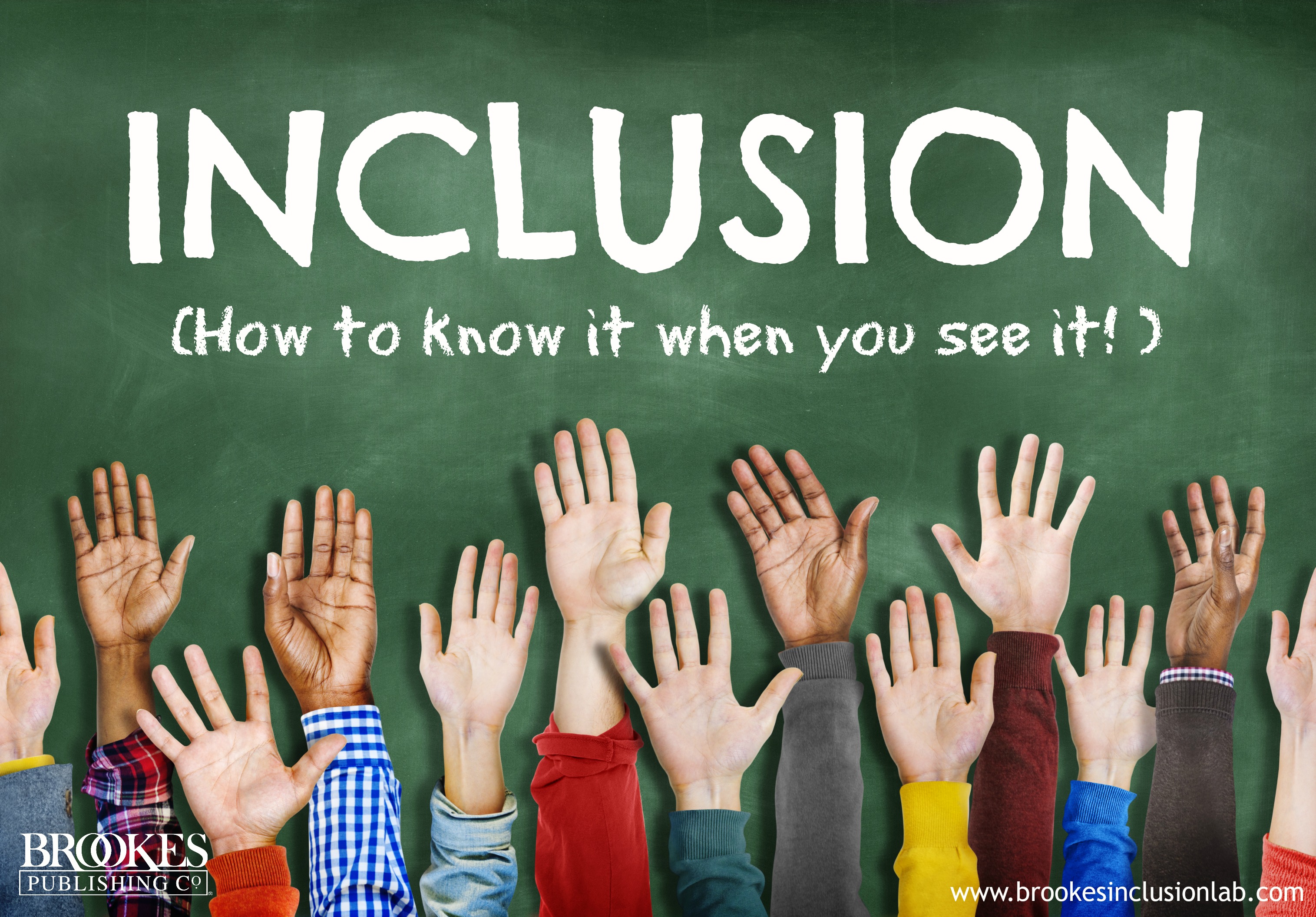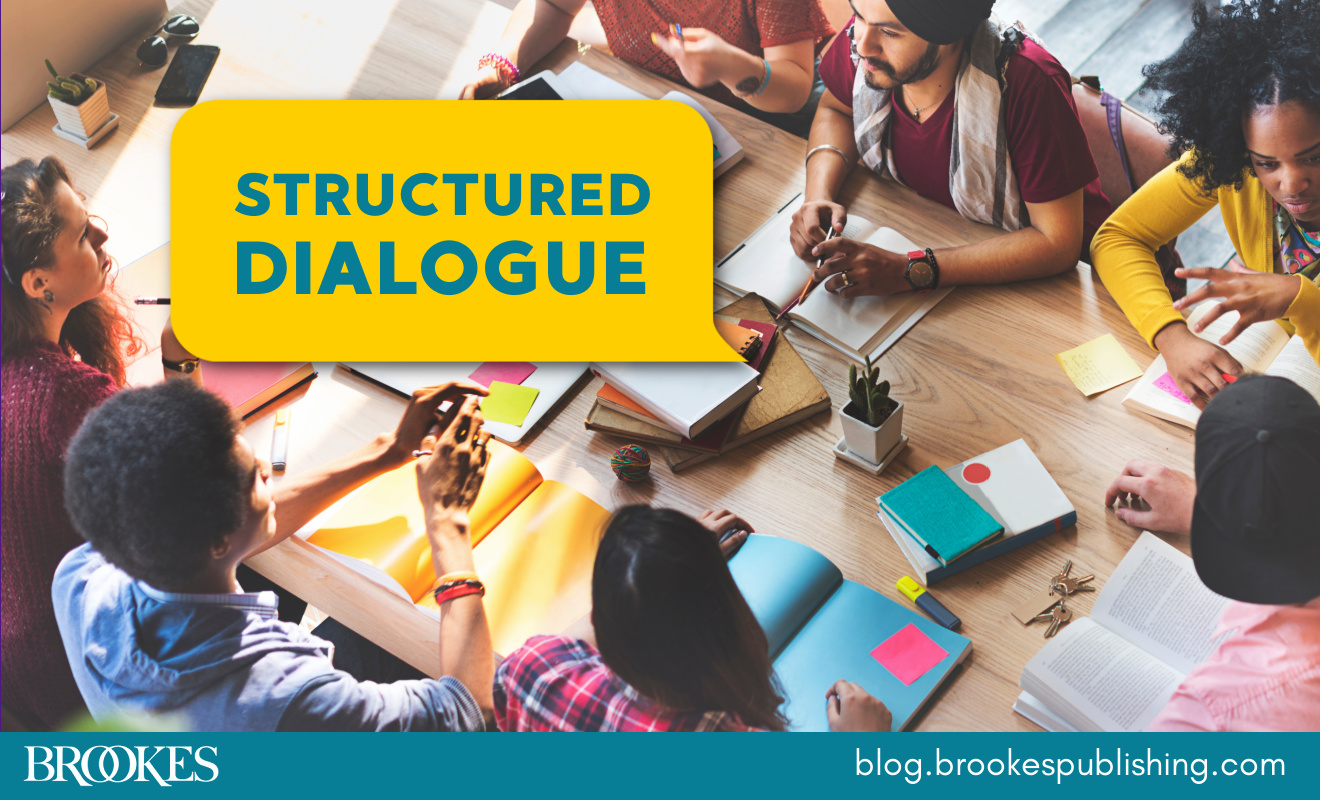Inclusion: How to Know It When You See It
January 17, 2017
If you’re a member of an inclusive school community, do you sometimes wonder if your school is “getting inclusion right”? How can you tell if your school is committed to the true meaning of inclusion—and walking the talk, too?
 Today’s post, excerpted from Cheryl Jorgensen’s The Inclusion Facilitator’s Guide, presents contrasting visions of two separate schools: one that doesn’t capture the real spirit of inclusion, and one that does. See which vision best describes your school—and use the second list to guide your efforts to strengthen inclusive practices and help all learners thrive.
Today’s post, excerpted from Cheryl Jorgensen’s The Inclusion Facilitator’s Guide, presents contrasting visions of two separate schools: one that doesn’t capture the real spirit of inclusion, and one that does. See which vision best describes your school—and use the second list to guide your efforts to strengthen inclusive practices and help all learners thrive.
***
VISION #1: Inclusion in Name Only
Schools that are not committed to the true meaning of inclusion have the following characteristics:
- The establishment of an inclusion program, an inclusion classroom, and inclusion students. (A truly inclusive school does not need to specify which classrooms are inclusive or which students are included.)
- Separate classrooms and programs are reserved for students with significant disabilities.
- Disproportionate numbers of students with disabilities are in certain classrooms.
- A lack of ownership exists on the part of general education teachers for students with disabilities rather than collaborative teaming to benefit all students.
- Students with disabilities go out into the community to learn in groups that do not include students without disabilities.
- Students with disabilities participate in only a limited number of extracurricular activities, such as the Special Olympics.
- Students with disabilities are always on the receiving end of help (e.g., special buddy programs) rather than engaging in reciprocal relationships that benefit both students with and those without disabilities.
- Students with disabilities have no social life outside of school.
VISION #2: Full Membership and Participation
Schools that grasp the true meaning of inclusion and welcome and support all learners have the following characteristics:
- Students with disabilities are members of age-appropriate general education classes.
- Students with disabilities attend the same school that they would be attending if they did not have disabilities.
- Students with disabilities progress through grade levels according to the same pattern as students without disabilities.
- Students with disabilities participate in the graduation ceremony at the same average age as their classmates without disabilities.
- Students with disabilities receive a diploma when they are discharged from special education.
- Students with disabilities learn in outside-of-school, age-appropriate, and inclusive environments after the age of 18 (before they receive their high school diploma or are discharged from special education programs).
- Students with disabilities are not removed from general education classes for academic instruction.
- Related services are delivered to students with disabilities primarily through consultation in the classroom and in typical, inclusive environments.
- No places or programs in the school are reserved just for the use of students with disabilities.
- Students with disabilities comprise about 12% of the enrollment (i.e., a natural proportion) in classes, courses, clubs, and extracurricular activities.
- The names of students with disabilities are included on all class lists, job lists, and other groups listed on blackboards and bulletin boards.
- Instructional materials are universally accessible to all students.
- Students with disabilities participate in classroom and school routines in typical locations, such as saying the Pledge of Allegiance, performing jobs and errands, and eating lunch in the cafeteria.
- Students with disabilities ride the same school buses as their classmates without disabilities.
- Students with disabilities participate in classroom instruction in similar ways as do students without disabilities.
- Students with disabilities participate in school plays, field trips, and community service activities.
- Schools are physically accessible to all students.
- Schools accommodate all students’ sensory concerns.
Which vision best fits your school? If you’re working toward vision #2, are there any resources we can provide to help you on your journey? Email me at jlillis AT brookespublishing DOT com if you have an idea for a future Inclusion Lab post that would help you reach your goals.





Write a Comment
Your email address will not be published. Required fields are marked *
Post a Comment